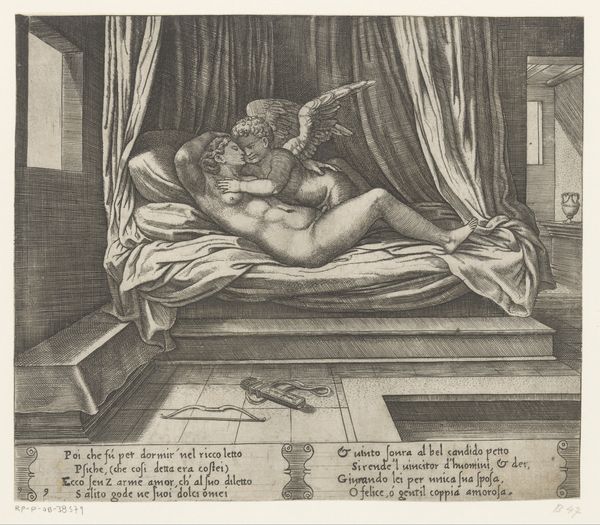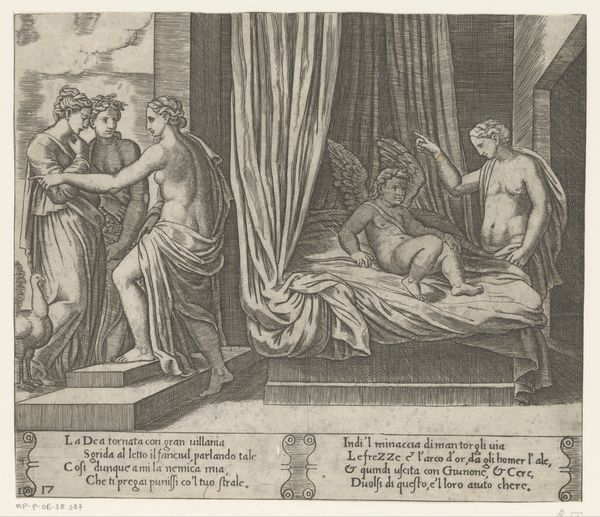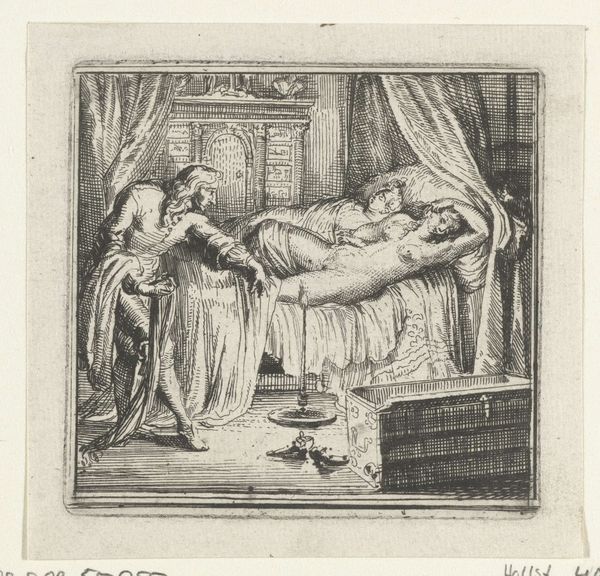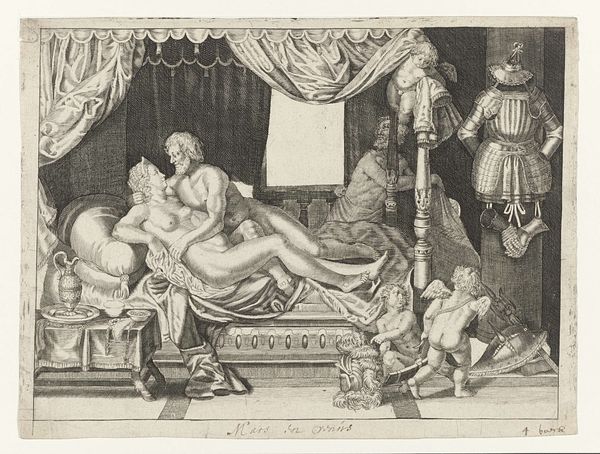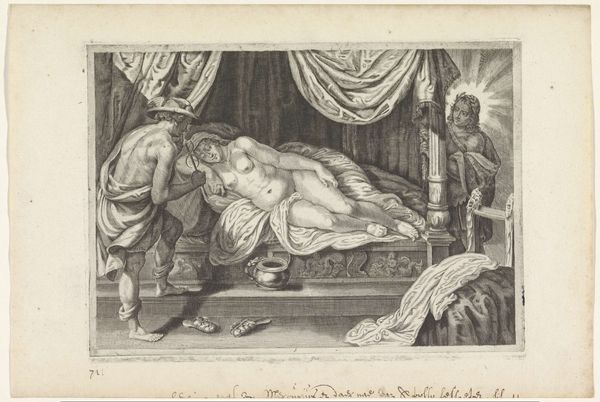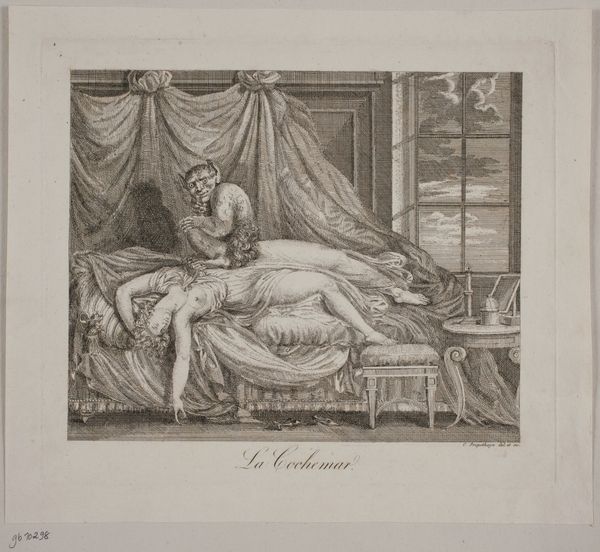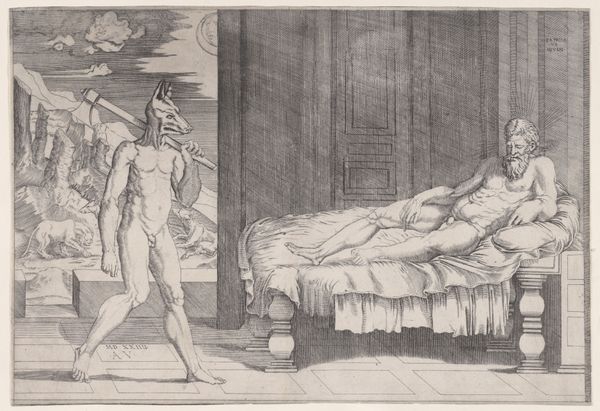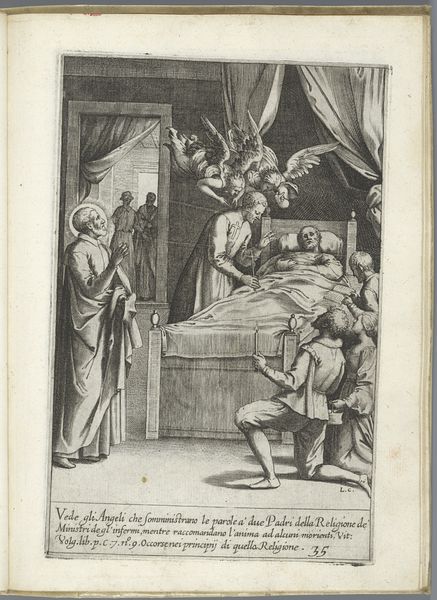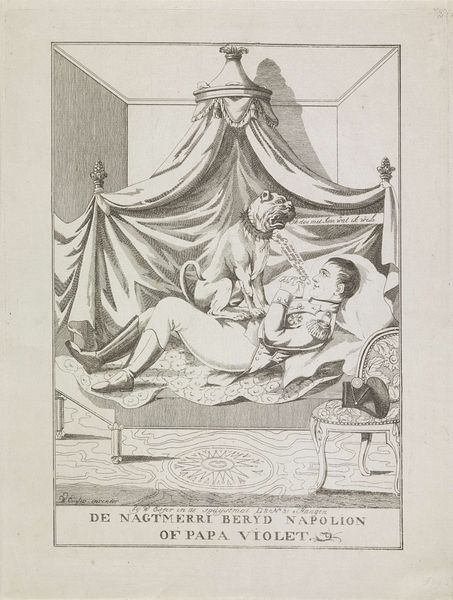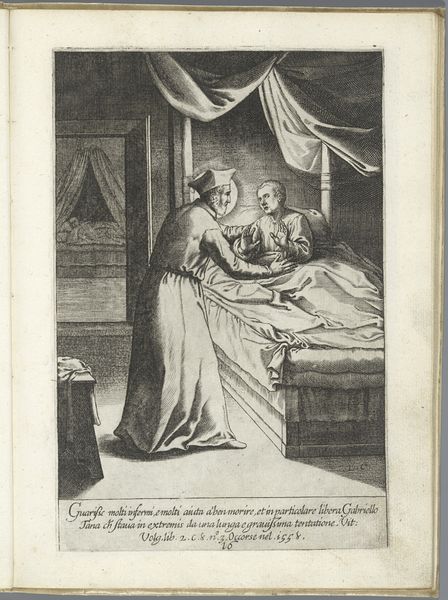
engraving
#
allegory
#
old engraving style
#
figuration
#
11_renaissance
#
cupid
#
line
#
italian-renaissance
#
nude
#
engraving
#
erotic-art
Dimensions: height 196 mm, width 235 mm
Copyright: Rijks Museum: Open Domain
Curator: Let's delve into this intriguing engraving, "Amor en Psyche samen in het huwelijksbed," created by the Master of the Die around 1530 to 1560. Editor: My first impression is one of intense, almost claustrophobic intimacy. The space feels small, dominated by the figures and the heavy, draped canopy. Curator: Absolutely. As an allegory, it explores the themes of love, desire, and perhaps the vulnerability inherent in intimate relationships within a very specific socio-political context. The eroticism is palpable. Editor: The technique, though, fascinates me. Look at the line work! The artist manages to suggest textures - the softness of the pillows, the weight of the drapes - with such precise, controlled strokes. It must have been painstaking labor to produce the printing plates to reproduce this across so many prints, really speaks to the accessibility to allegory. Curator: The reproduction also democratized these scenes; while many artworks were solely the province of the wealthy and influential, engravings were widely distributed among a burgeoning class of art collectors with more modest means. This really played a significant role in the Italian Renaissance. Editor: And what about the act of depicting Psyche and Cupid so vulnerably, nearly nude? The consumption of art like this, surely not for everyone. It speaks to the artist's boldness, but also to the openness of at least a segment of the artistic patronage world to the eroticism in a new way. Curator: Yes, it's walking the line. On one hand, the myth of Cupid and Psyche served as a suitable, if thin, veil of respectability. On the other hand, engravings like this catered to an appetite for scenes of intimacy, for depictions of the human form that could be morally instructive and titillating. It was really an appeal to authority for popular approval in imagery, to avoid complete dismissal. Editor: In a way, it seems that we are viewing the past with a view to the future through the prints. Thanks for letting me explore. Curator: The labor to create the art is always just as informative of how it relates to the history and what it shows us of the culture that made the artist and created it. Thank you.
Comments
No comments
Be the first to comment and join the conversation on the ultimate creative platform.
